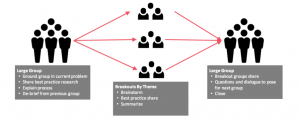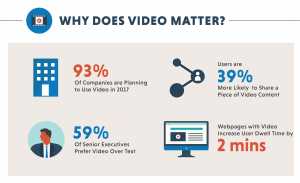
A manager who supervises remote employees has a far different set of challenges than a supervisor whose employees are located in the office. Managers of remote employees do not have the option to simply pop their head out of their office and catch up with their team. Managing mobile teams simply requires a different approach, one that strikes a firm balance between supervision and trust. Learning how to supervise remote workers without micromanaging can be a challenge. However, with a few minimal tweaks to your management strategy, you can guarantee that your remote employees are operating at peak efficiency while taking accountability for their own actions.
Be Clear with Your Communication Expectations
The physical distance separating remote employees and their managers demands increased communication to overcome that geographical disconnect. It’s up to you as a manager to convey to your employees exactly when and how said communication should go down. If you want an email update at the end of each day, communicate that to your employees. If you only want updates after important tasks and milestones are completed, share that with your employees. Know your own communication style and make sure others do too so they know how best to work with you.
Trust Them
By nature, remote work attracts independent personality types. As a supervisor, it’s important to understand how your team members operate in strategizing how best to manage them. If your employees work best independently, then it’s incredibly important not to undermine their sense of ownership over their work, which can lead to a decrease in motivation and output. Trust your employees to work independently and hold themselves accountable for their work. If a situation arises where an employee isn’t up to scratch, then you can consider increasing supervision. But in the meantime, empower your remote workers with their own decision-making power and allow them to flourish as independent thinkers and workers.
Check In Consistently
It’s important to check in on your remote employees, yes. But try to stick to a schedule as far as daily check-ins go. Checking in at random times with little warning can disrupt the workflow of your employees. Impromptu virtual drop-ins can also put employees on edge and create the impression that you don’t trust them to get their work done on their own. Be consistent with when—and how often—you check in with your employees, and they’ll thank you.
Tailor Your Management Approach to Experience Level
If you have employees who are fresh out of college (or fresh to the remote work world), then, by all means, don’t be afraid of keeping tabs on them. However, it’s important to tailor your management approach to fit the context for each employee. Remote employees with more skill and experience don’t require as much supervision, and you should not focus as much attention on them as you would an employee who is new to the field.
Set Clear Project Expectations
There’s nothing more frustrating than having to re-do a project because clear guidelines and expectations weren’t agreed upon at the outset. When assigning projects, be sure to communicate exactly what you have in mind, with specifics, so that your employees have a clear understanding of your intentions and expectations. With everyone on the same page from the start of the project, you ensure that there won’t be miscommunication (or a sub-par project outcome) down the road.
Provide Feedback
If a project is completed and it isn’t quite right, rather than simply redoing the work yourself, set aside time with your employee(s) to give feedback. By gently explaining what needs to be done differently and how to improve upon the work, you are communicating to your employees that you trust them to learn from that feedback and correct the work themselves, rather than undermining their effort.
Give Hard Deadlines
It can be easy for remote workers to fall prey to the ‘out of sight, out of mind’ mentality. To ensure that your remote employees are being productive (without constantly checking in on their progress), set hard deadlines, and check in as those deadlines approach. Project milestones and deadlines provide a great opportunity for you to touch base on your employees without seeming like you’re micromanaging their workflow.
Managing remote employees can require a bit more creativity than managing in-person employees. But, with the right approach, you can streamline communication on your remote team and facilitate a work environment where employees feel trusted to work independently and get the job done correctly with minimal, yet effective, supervision.
Business & Finance Articles on Business 2 Community
(68)







